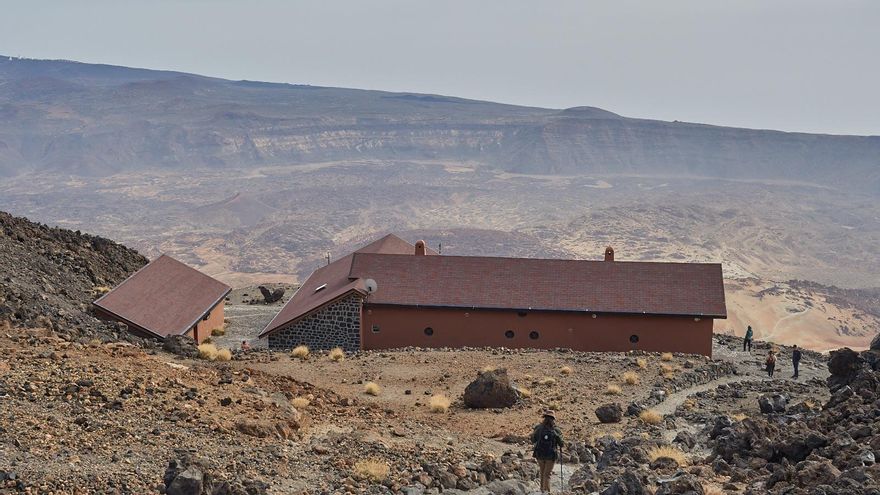
The comprehensive refurbishment planned by the Tenerife Island Council to reopen the Altavista Refuge, a facility closed since November 2020, aims to create a more sustainable installation with minimal environmental impact on the delicate natural surroundings. The revamp will involve the use of renewable energies and ensure top-notch service for mountain enthusiasts looking to spend the night there. This year marks the fourth and final winter with the high-mountain infrastructure – the only one in the Teide National Park – closed, if the island Corporation’s forecasts are met. The aim is to finalize the project’s improvement and rehabilitation this month to kick off the works in 2024 and potentially reopen in 2025. The island’s Councillor for Natural Environment, Sustainability, Security, and Emergencies, Blanca Pérez, notes that the Altavista refurbishment “is one of the goals we have set ourselves since taking office at the Council.” She emphasizes, “We have focused on doing what is necessary to recover the space and improve the equipment and infrastructure, which were closed or left abandoned during the previous term.”
Usage and Enjoyment
[–>
Pérez explains, “We are driving the recovery of this facility for the use and enjoyment of everyone, both residents and visitors.” In this regard, she points out that since its closure in November 2020, “people have continued to go up and causing problems, mainly due to lack of cleanliness; now we are in the process of addressing the situation and making it available to the public.”
Budget
[–>
The Council’s forecast is to invest around 1.2 million euros in improving and rehabilitating the infrastructure. Specifically, an amendment by CC and PP, the current ruling coalition, to the 2024 budgets allocates 1,227,839 euros for the Altavista Refuge’s rehabilitation. The Councillor herself estimated the cost of rehabilitating “this beloved facility,” following an initial report, at a minimum of 675,000 euros. She also revealed that the management model of the public resource, previously linked to the Teleférico del Teide company until its closure, is still pending definition.
Mountaineer and Geographer
[–>
The Island Director for Natural Environment, Pedro Millán, a mountaineer and geographer, recently visited the Refuge. He highlights that “it is a historic building from the 19th century, which played a crucial role in safety and environmental control during the ascent to Teide, home to some of Spain’s most important and attractive trails.” He believes it is “a crucial tool for improving the safety of people visiting the National Park.” Once the project’s drafting is completed, to be submitted this very month, the next step will be the validation and certification of several reports that must be authorized by the managing body, in this case, the Teide National Park, in accordance with current regulations. Once approved, the improvement and rehabilitation works of the Altavista Refuge will be put out to tender for awarding. The works include the installation of an ecological purifier, a photovoltaic system, and the improvement of energy efficiency and suitable thermal insulation for this unique environment.
Snow Society
[–>
The Altavista Refuge is located at kilometer 40 of the TF-21, the road from La Orotava to Teide, at an altitude of 3,270 meters. It consists of two buildings and features a nursing room, lounge, dining room, and kitchen. It has three communal bedrooms with a total capacity for 54 visitors. The rooms are equipped with heating, and the beds come with sheets and warm duvets, so there is no need to bring a sleeping bag unless desired. It has toilet facilities but no showers. The original refuge was built in 1892, and the Tenerife Island Council took over in 1950. It underwent a complete refurbishment in 2007. It is the ideal setting for the unusual snow society – currently in vogue – comprising mountaineers, hikers, and nature lovers in general.















